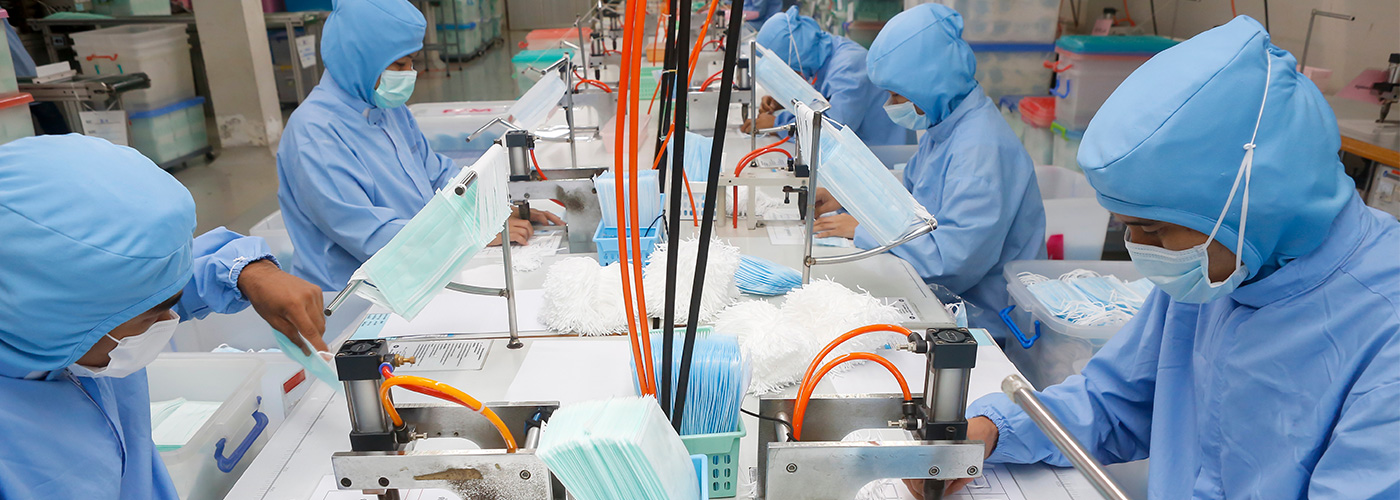Four ways COVID-19 has changed the landscape for people with disabilities

COVID-19 has touched every aspect of our society, and almost every individual has felt the effects of this pandemic in some way. Throughout this time, SourceAmerica has remained focused on the impact this crisis has on the employment of people with disabilities. Below are some of the ways our organization is thinking about the challenges and opportunities:
The impact to Community Rehabilitation Programs
There is a lack of data and dialogue regarding the future of the estimated 5,000 nonprofit Community Rehabilitation Programs (CRPs) in the United States. Of particular concern are the smaller nonprofits that offer direct support services to people with disabilities outside of major metropolitan areas.
The more than 700 nonprofit CRPs that comprise the SourceAmerica network rely on referrals from their community peers to connect professionals with disabilities to employment opportunities. More importantly, people with disabilities in communities across the country look to their local CRPs to address a variety of needs including community engagement, housing, skill acquisition, and employment.
Due to the pandemic, some nonprofit organizations may be forced to shut their doors permanently. This could result in a ripple effect that impacts both the economy and the employment of talented professionals with disabilities. This issue cannot go unaddressed. The attention of policymakers and researchers is needed to understand the immediate and potential long-term impact COVID-19 is having on this vital provider network and take action to maintain continuity of services for people with disabilities.
Fluctuating unemployment numbers
In the last six months, the employment landscape for people with disabilities has changed dramatically. While people with disabilities were seeing gains in employment at the beginning of the year, the situation quickly changed once COVID-19 spread across the U.S. Unemployment numbers in April showed that professionals with disabilities were hit harder than other segments of the workforce. Fortunately, as restrictions have eased throughout the United States, unemployment numbers for people with disabilities have started to decrease. As COVID-19 resurges, we expect to see peaks and valleys in the gains and losses of employment.
Pre-COVID-19 unemployment numbers showed there was still much work to be done to create more opportunities for people with disabilities. It could take years to truly understand the long-term impacts on professionals with disabilities. SourceAmerica continues its mission of creating and providing employment opportunities for these individuals. Our programs are geared toward analyzing future of work trends, working with high school and college students to create assistive technology, and advocating on Capitol Hill for legislation that supports the disability community.
The talent of people with disabilities is recognized
People with disabilities have kept some of the nation’s essential services running during the pandemic. These professionals loaded the U.S. Navy ships that were used as floating hospitals, continued to provide essential services for a variety of U.S. federal agencies, and made personal protective equipment (PPE). They have demonstrated their commitment and dedication to keeping communities safe. Their talents and the importance of their work should be recognized today and every day.
Many of these individuals are employed through the AbilityOne® Program, one of the largest sources of employment for people who are blind or have significant disabilities in the United States. SourceAmerica is one of three Central Nonprofit Agencies in the AbilityOne network, and we will continue to support this work now and for years to come.
More dialogue and opportunities surrounding remote work
Prior to the COVID-19 pandemic, many professionals with disabilities had been told that working from home was not an option. Today, that mindset is shifting. In order to avoid spreading the virus, many employees have been told to work remotely. This societal change has prompted many headlines regarding the including of people with disabilities in the virtual workspace. As work from home becomes the norm for millions, people with disabilities now have a chance to enter the workforce without facing transportation barriers.
As conversations surrounding work from home options for this segment of the workforce continue, the need for accessible technology and more robust trainings should be top of mind.
Do you have a story about how COVID-19 has affected the life of a person with a disability you know? Share your story with us by emailing communications@sourceamerica.org.
If you’re looking to work with our network of nonprofit agencies to employ people with disabilities contact customerservice@sourceamerica.org.